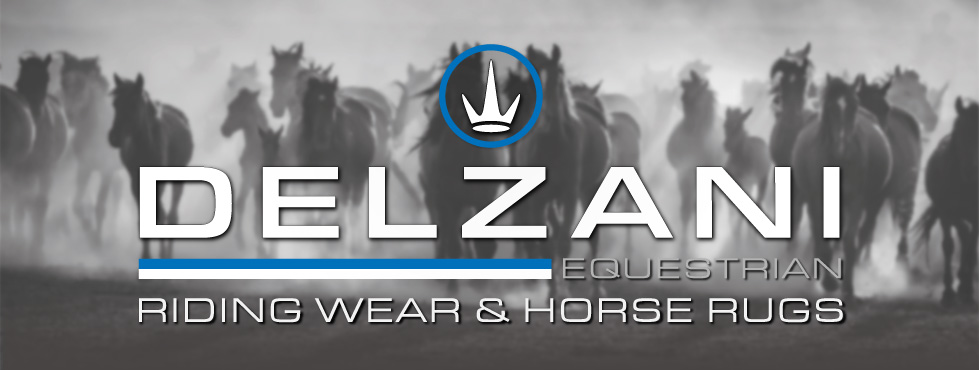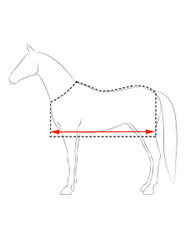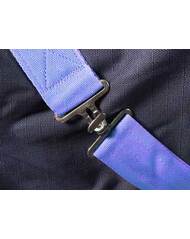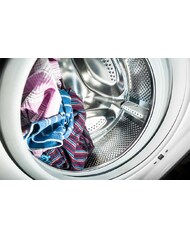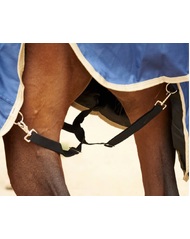Understanding your horse rugs waterproofing
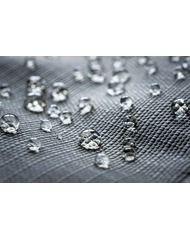
Waterproof Horse Rugs in Australia: How to Test, Maintain and Protect Your Turnout’s Breathability
Updated September 2025
A complete guide for Australian riders on how waterproof horse rugs work - from breathable membranes and fabric ratings to testing, maintenance and leak prevention. Learn how to tell if your rug is still waterproof and how to extend its life through proper care.
At a glance: Waterproof horse rugs rely on a breathable membrane - not just the fabric to block rain while allowing sweat vapour to escape. The moment that membrane degrades, leaks start. That’s why Delzani turnout rugs use high-grade coatings tested to 3500mm waterproof rating and 3300g/m² breathability, built to withstand harsh Australian weather while keeping horses dry and comfortable year-round.
The chemically treated membrane is what lines the underside of the fabric in synthetic waterproof rugs and provides the waterproofing - the outer fabric itself does not. This membrane allows vapour, which is smaller than water molecules, to escape while blocking water from entering. Once this layer is damaged, it cannot be resealed.
The quality of this membrane is the single biggest difference between premium and budget rugs. Many cheaper rugs use lower-grade membranes that leak under heavy rain or start peeling from the fabric after limited use. Others skip breathability altogether, resulting in a rug that’s simply waterproof - but not comfortable. That’s how some manufacturers cut costs, at the expense of your horse’s comfort.
A Quick Test to See If Your Rug Is Breathable
Delzani rain sheets use a soft mesh lining for superior breathability. To check yours, hold the rug up to the sun and look from underneath - you’ll see thousands of pinpricks of light. These are the waterproof pores that let vapour escape. The membrane ensures they’re smaller than a water molecule, so rain can’t get through.
Tip: When a rug is wet, breathability drops to near zero as water covers the pores - this is completely normal.
How to Check Waterproofing in a Horse Rug
To test if your rug is still waterproof, lay it over a sink or tub and create a small dip in the fabric (avoiding seams or fittings). Pour a few glasses of water into the dip and let it pool. The denier fabric should hold water without seepage. If you notice dampness underneath, the membrane has likely degraded.
What Else Helps a Rain Sheet Stay Waterproof?
Taped Seams: Delzani turnouts feature taped seams behind stitching and fittings, but no rug can ever be 100% waterproof. Stitching, webbing, and fastenings always create tiny entry points. Tape sealing significantly slows water entry - we apply it along all side seams and behind surcingle and leg-strap stitching for maximum protection.
Why It May Appear Your Rug Is Leaking
Condensation & Sweating
Even in cool weather, horses perspire. If a rug lacks breathability, moisture builds inside from sweat and temperature differences, forming condensation. It can feel like a leak - but it’s actually trapped moisture. For comfort, both the outer shell and lining must breathe.
Galloping or stress can produce more sweat than a rug can breathe out. And when the outer fabric is soaked, breathability falls sharply, allowing condensation to form inside. Use a cotton underrug in wet, humid, or cold conditions - it wicks perspiration and condensation away from the coat. Remember, a horse can perspire up to one litre per hour.
If you’ve ever worn a raincoat against bare skin on a cold day, that clammy feeling is the same condensation process.
Wicking
Water can wick into a rug via linings or under-rugs. Capillary action draws moisture upward from drip lines and bindings, especially if an under-rug extends slightly beyond the top rug. Duration matters more than rainfall amount - a long, slow drizzle allows more wicking than a short downpour.
Tail Flaps
At Delzani, we design large tail flaps for maximum coverage, but some water entry is unavoidable. The flap is a separate piece stitched to the main rug, and no method has yet eliminated seepage through this seam. A correctly fitted rug positions the tail-flap seam below the top of the tail to reduce water entry.
How Long Does a Rug’s Waterproofing Last?
With proper care, your turnout rug should last for years. Key factors that shorten its life include:
- Washing too frequently or using top-load machines that twist and stress seams.
- Using harsh detergents or hot water (never exceed 35°C).
- Leaving rugs in the sun when not in use - UV breaks down membranes.
- Exposure to acidic shampoos or coat conditioners.
Written by Jane Griffiths - an experienced Australian horse owner and product developer with over three decades immersed in equestrian life. Jane has spent years refining horse rugs, tack, and riding apparel to better suit Australian climates. She has enjoyed countless weekends at gymkhanas, show jumping events, and pony club competitions with her daughter, and still loves hitting the trails with friends whenever she can. Her lifelong passion for horses and hands-on understanding of equine comfort continue to shape her practical, rider-first approach to horse care and product design.
Leave a comment
Related Equestrian Guides
Delzani Horse Rug Sizing Guide
We have put together this comprehensive guide to help you purchase the ideal size Delzani horse rug.
Waterproof Horse Rugs & Winter Turnouts
Keep your horse cozy and dry during rainy and cold winter weather with Delzani's waterproof turnout horse rugs. Designed for comfort and warmth, our rugs provide reliable protection against harsh weather conditions. Shop now!
How to fit & adjust horse rug belly surcingles
Belly surcingles keep horse rugs secure, but only if fitted correctly. We answer common questions on what surcingles do, why they matter, and how proper adjustment ensures comfort, safety, and longer rug life for horses in Australian conditions.
Wash Guide - Horse Rugs
To get the best life from your Delzani horse rug, taking a few simple washing precautions will go along way.
Understanding Denier: The Key Differences Between 600D and 1200D Turnout Rugs
Confused about 600D vs 1200D horse rugs? Learn what denier really means, how it affects toughness (not warmth or waterproofing), and when to choose Delzani’s Waratah 600D rainsheets for lighter use or Wyndham 1200D rainsheets for maximum durability.

